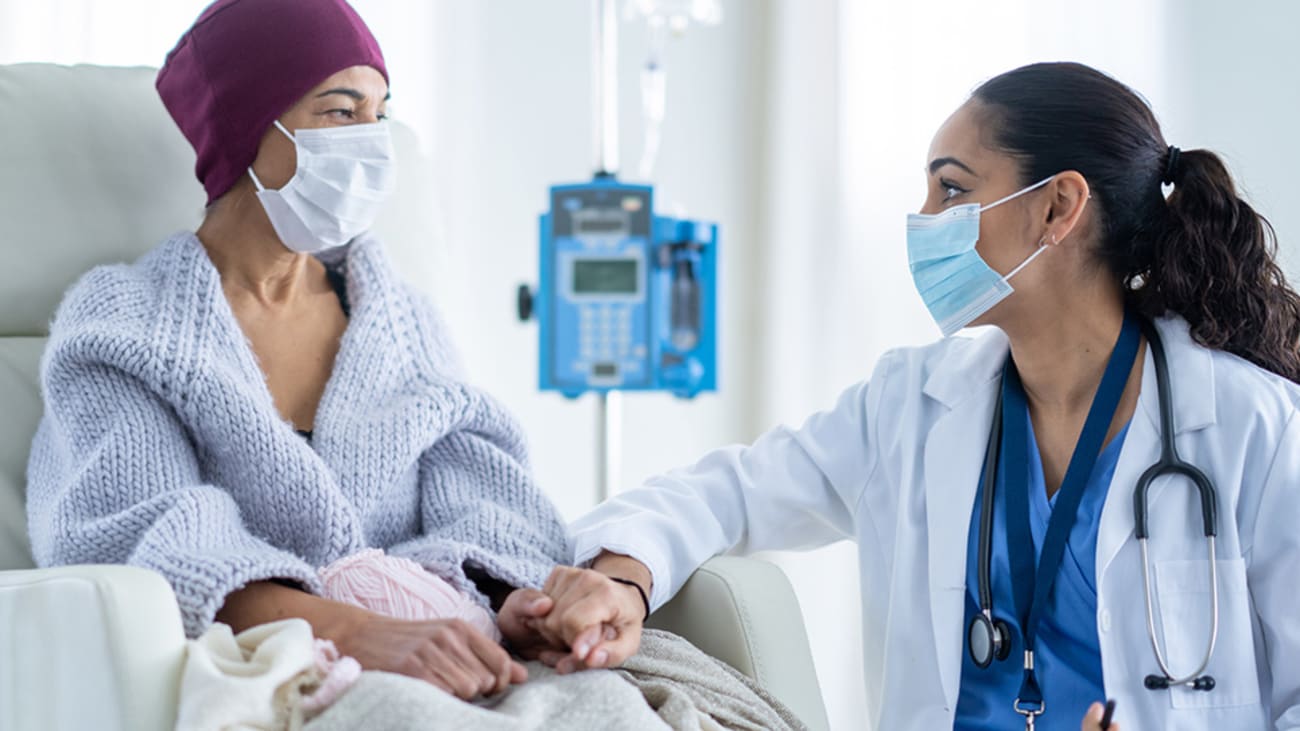.

By Adeyemi Adekunle
Lisa never thought the dull ache in her chest was a warning sign. At 45, she was active, followed a healthy diet, and had no family history of cancer. When her mammogram revealed early-stage breast cancer, her world turned upside down. Lisa’s story mirrors a concerning trend highlighted in the latest report from the American Cancer Society (ACS): cancer diagnoses are rising.
In 2021, data indicated that women under 50 were 82% more likely to develop cancer compared to their male counterparts, a significant rise from 51% in 2002.
This increase is largely attributed to the rising cases of breast and thyroid cancers among younger women.
The ACS report brings troubling news. While deaths from cancer have decreased significantly due to better treatments and early detection, certain cancers are being detected more frequently in young women. The increase is especially striking in breast and colorectal cancers. These cancers, once predominantly seen in older adults, are now being diagnosed at younger ages with alarming regularity, sparking concerns about lifestyle, environmental changes, and other potential factors.
For Lisa, the journey from diagnosis to remission has been a battle. “I thought I was doing everything right—no smoking, regular checkups, eating healthy,” she says. “It felt like a cruel twist of fate.” Her confusion and despair are shared by countless other women facing similar diagnoses.
Among women aged 50 to 64, cancer rates are now slightly higher than among men of the same age, the report found. Among those under 50, the gap widens significantly, with women almost twice as likely to face a cancer diagnosis as men. Researchers are scrambling to uncover the reasons behind these numbers, and early evidence points to a mix of lifestyle and environmental factors.
Obesity, alcohol consumption, and sedentary lifestyles are thought to play a role in the uptick of cancer cases. Rebecca Siegel, the ACS’s senior scientific director of cancer surveillance research, noted that the role of alcohol, in particular, has been underestimated. “For colorectal cancer, excessive alcohol intake increases risk,” she explained. “For breast cancer, there doesn’t seem to be a safe level of alcohol, but even moderate consumption can elevate the risk slightly.”
The generational shift is another theory gaining traction. Known as the “generational impact,” this concept suggests that lifestyle changes over the decades—including poorer diets, reduced physical activity, and increased exposure to environmental hazards—may be pushing the onset of cancer to earlier stages of life. It may also lead to fewer diagnoses in later years, changing the typical trajectory of cancer incidence.
For Dana, a 39-year-old mother diagnosed with colorectal cancer, the lack of awareness surrounding younger cancers was a major challenge. “I didn’t even know people my age could get this,” she says. “When my doctor suggested I screen for colon cancer, I hesitated. I thought I was invincible.” Dana’s case exemplifies the importance of heightened vigilance and earlier screening protocols. Experts now recommend beginning screenings for colorectal cancer at age 45, or even earlier for those with a family history or symptoms. This marks a departure from past guidelines, which focused on older populations.
Another worrisome aspect of the report is the continued disparity in cancer outcomes across racial groups. Black Americans, in particular, face worse survival rates across many cancer types compared to white Americans. Uterine corpus cancer, for instance, has a survival rate of just 63% for Black women, compared to 84% for white women. Black men also experience significantly higher death rates for prostate cancer. Despite advancements in early detection and treatment, these disparities persist, underscoring the systemic inequities embedded in healthcare access and quality.
Dr. Wayne A.I. Frederick, interim CEO of the ACS, expressed concern over these stark inequities. “The stubborn resistance in outcomes among underrepresented minorities remains deeply troubling,” he said. Programs like the ACS’s VOICES initiative aim to address these disparities by studying African American women over time to uncover the root causes of these differences and develop targeted interventions.
In response to these challenges, cancer survivors like Lisa have channeled their experiences into advocacy. Lisa, now cancer-free for three years, volunteers at her local cancer foundation to support other young women navigating diagnoses. “I want women to know they’re not alone,” she said. “It’s scary, but there’s a community here to help.”
Despite the alarming trends, the ACS report also delivers hopeful news. Since peaking in 1991, cancer deaths in the U.S. have declined by 34%, equating to approximately 4.5 million lives saved over the past three decades. Much of this progress stems from public health initiatives, improved treatments, and expanded access to early detection methods. Immunotherapy, targeted drug treatments, and smoking cessation campaigns have played pivotal roles in turning the tide against cancer mortality.
Still, certain types of cancer continue to defy these advancements. Lung cancer remains the leading cause of cancer death in the U.S., responsible for more fatalities than colorectal and pancreatic cancers combined. While smoking remains the primary driver of lung cancer, other factors like air pollution, radon exposure, and genetic mutations contribute to its prevalence. If considered alone, non-smoking lung cancer would rank as the eighth leading cause of cancer deaths in the U.S. and fifth globally—a staggering statistic that highlights the complexity of tackling this disease.
For patients like Dana, the key to survival often lies in being proactive. She urges others to know their family medical histories, seek screenings early, and advocate for themselves. “If something doesn’t feel right, push for answers,” Dana said. “It could save your life.”
The ACS report underscores the importance of prevention and public awareness campaigns in reducing cancer incidence. Smoking cessation programs, HPV vaccinations, and education about modifiable risk factors like diet, alcohol, and exercise are central to preventing cancer altogether or catching it at an early, more treatable stage. Experts stress the need for people to stay updated on screening guidelines. For example, women of average risk are advised to begin regular mammograms at age 40, while those at higher risk may need to start earlier. Similarly, routine screenings for cervical cancer are crucial and should not be overlooked.
Lisa’s experience has taught her the importance of self-advocacy and education. “I didn’t know that my diet or even light drinking could have such a huge impact on my risk,” she said. “Now, I tell everyone to be their own health champion—ask questions, go to your appointments, and don’t ignore the small symptoms.”
Cancer, once viewed primarily as a disease of old age, is now reshaping societal and medical perspectives. As younger women like Lisa and Dana fight for their health, their stories highlight the pressing need for action. Expanded public health initiatives, targeted education campaigns, and equitable access to care are critical in addressing the challenges posed by these rising numbers. Moreover, personal vigilance and proactive measures remain essential tools in preventing, detecting, and ultimately defeating this disease.
Lisa reflects on her journey with newfound resilience. “Getting cancer felt like the end of the world. But it also gave me a purpose I didn’t know I had,” she said. “If I can help even one person get an early diagnosis or better care, then the fight was worth it.”
For countless others, the rising rates of cancer diagnoses among women—and the ongoing efforts to combat them—serve as a powerful reminder of the fragility and resilience of the human spirit. Each statistic is more than a number; it is a life, a family, a story, and a testament to the strength required to face one of life’s greatest challenges. While the battle against cancer is far from over, every small victory offers hope that someday, fewer people will have to fight this fight.
This detailed exploration of the ACS report illuminates not just the numbers but the human stories behind them, underscoring the urgency of understanding and addressing this escalating health crisis. As science advances and advocacy grows, the message is clear: there is work to be done, but the will to fight is stronger than ever.




